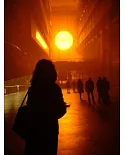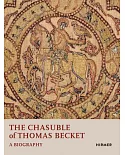內容簡介
The myriad ways in which colour and light have been adapted and applied in the art, architecture, and material culture of past societies is the focus of this interdisciplinary volume. Light and
colour’s iconographic, economic, and socio-cultural implications are considered by established and emerging scholars including art historians, archaeologists, and conservators, who address
the variety of human experience of these sensory phenomena. In today’s world it is the norm for humans to be surrounded by strong, artificial colours, and even to see colour as perhaps an
inessential or surface property of the objects around us. Similarly, electric lighting has provided the power and ability to illuminate and manipulate environments in increasingly unprecedented
ways. In the context of such a saturated experience, it becomes difficult to identify what is universal, and what is culturally specific about the human experience of light and colour. Failing
to do so, however, hinders the capacity to approach how they were experienced by people of centuries past. By means of case studies spanning a broad historical and geographical context and
covering such diverse themes as architecture, cave art, the invention of metallurgy, and medieval manuscript illumination, the contributors to this volume provide an up-to-date discussion of
these themes from a uniquely interdisciplinary perspective. The papers range in scope from the meaning of colour in European prehistoric art to the technical art of the glazed tiles of the Shah
mosque in Isfahan. Their aim is to explore a multifarious range of evidence and to evaluate and illuminate what is a truly enigmatic topic in the history of art and visual culture.
網路書店
類別
折扣
價格
-
新書$6750





















